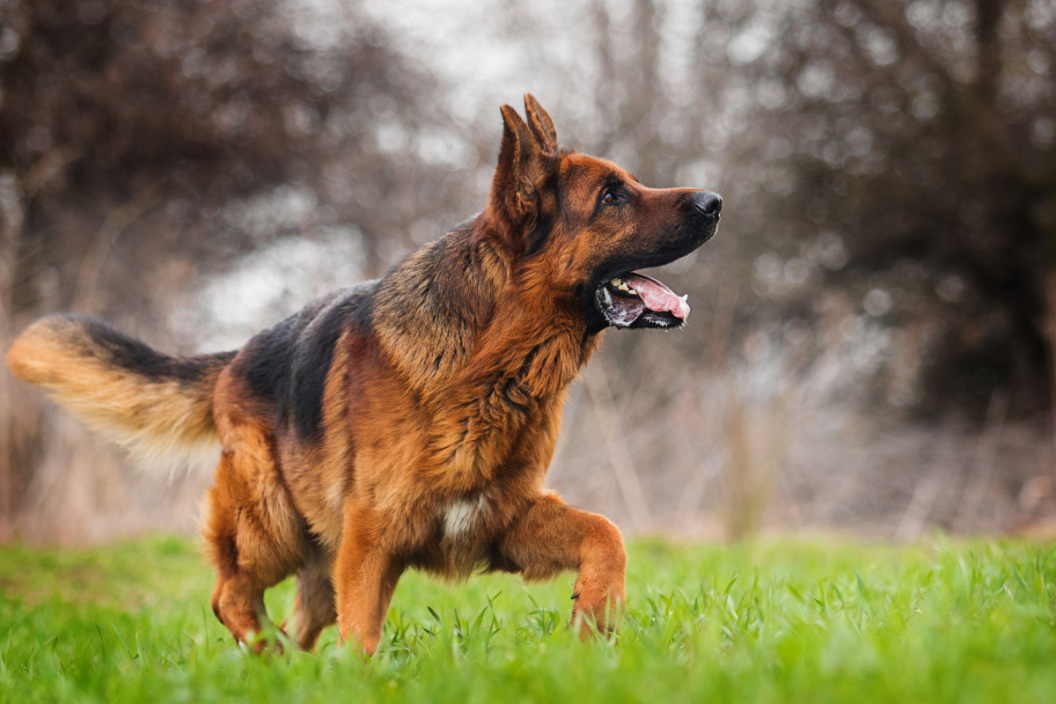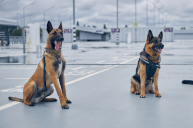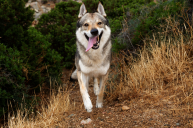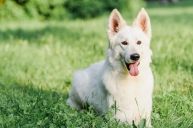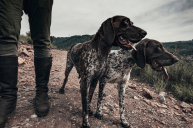Did you know there are several different types of German shepherds?
German shepherds are one of the most recognizable working dog breeds. These quick-witted animals became popular military dogs during World War I, where they proved their intelligence and trainability on the battlefield. It wasn't long before the breed made its way into breeding programs in the United States. Since they have such a high working drive, German shepherds make excellent service dogs and are known for their bomb-sniffing, tracking, herding, and search-and-rescue work. However, not all GSDs are created equal. In fact, there are several different types of German Shepherds that are characterized by a few distinct differences. Some of these differences come from where the purebred German shepherd line originates, while other characteristics have more to do with the dog's function or purpose. One big difference is between American and German dogs. But there are also different groupings within each line based on working ability vs. conformation show ability. Here's everything you need to know about the different types of German shepherd dogs.
1. West German Working Line German Shepherds
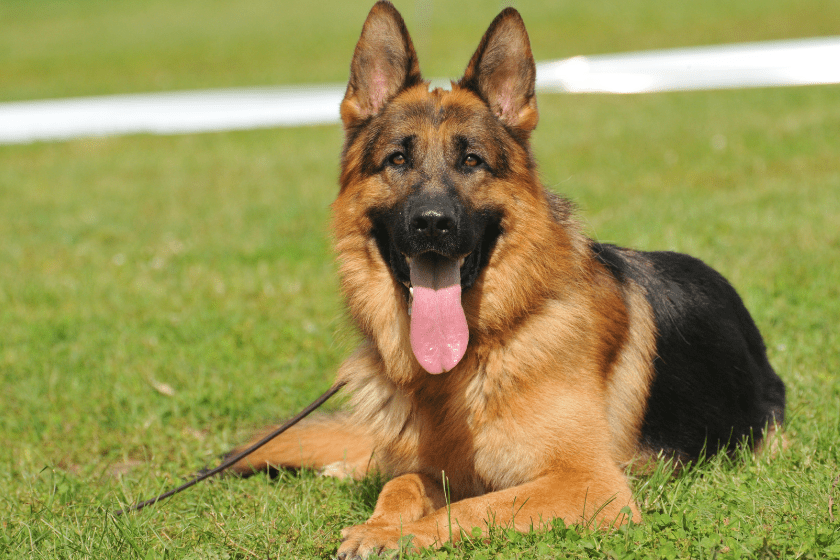
West German working line German shepherds are thought to be true to the dogs born during the lifetime of Max von Stephanitz, the father of the German shepherd breed. These dogs have a lot more stamina than demonstration lines, which means they have a higher prey drive. If their need for tasks is not met, they can become bored, leading to anxiety and disruptive behavior. Agility runs, sensory-stimulating activities, and a sense of intent are all essential to keep these dogs happy and healthy. They are also bred to have a high pain threshold, making them much more valuable in their various lines of work. They have a sable coat color and a mixed coat style. Although this is the most common color of GSD, they may also be black and tan or a combination of sable and solid black.
2. Czech Working Line German Shepherds
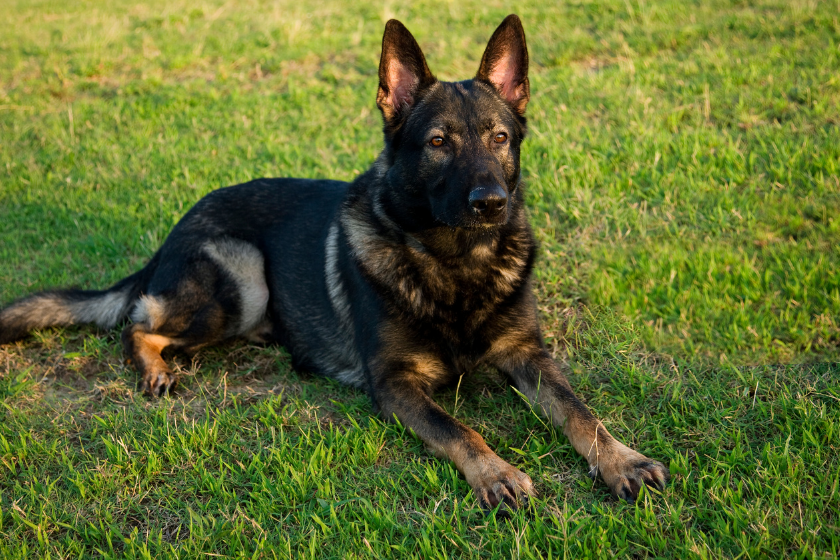
When Germany was divided into East and West, another type of German shepherd was developed around 1955 in Czechoslovakia: the Czech working line German shepherd. At first, they were solely used for border control. But when East and West Germany became one again, the pups were bred to be family dogs. Czech German shepherds are leaner than most working lines and more agile. They have a sable or "agouti" coat that is a combination of black and tan. Many Czech puppies had bloodlines that veered off, mixing with another German shepherd line along the way due to muddy breeding. These mixed breed dogs make popular family dogs but need proper dog training to be good family pets.
3. East German Working Line German Shepherds
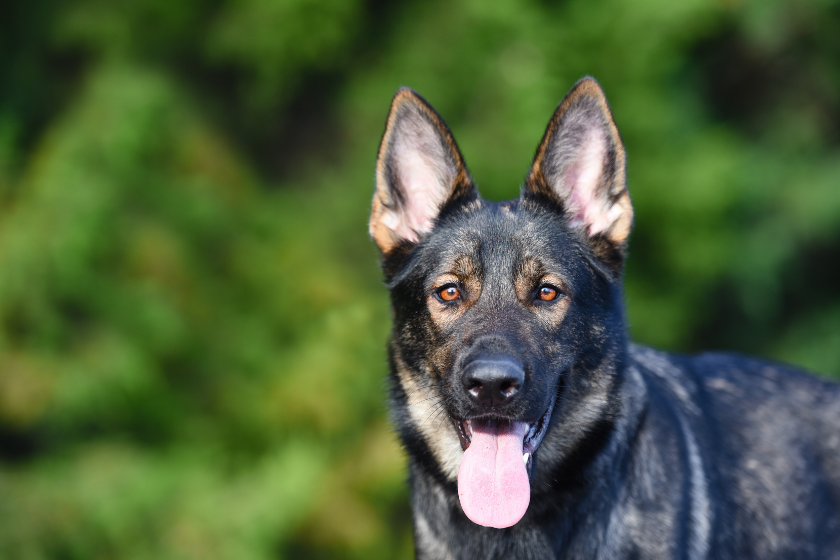
RELATED: 5 Facts About German Shepherds That Prove They're More Than Police Dogs
This type of German shepherd, also known as a Deutsches Demokratische Republik (DDR), dates back to the 1940s and 1950s when East Germany was divided from West Germany. These dogs were bred for their workability rather than their looks. The breeding of the DDR German shepherd was strictly controlled in East Germany in order to produce big, sturdy dogs. The emphasis on maintaining clean breeding and an obedient, trustworthy temperament resulted in rather pure dog lines. East German working lines are often darker in color or a bi-color, such as black or sable German shepherd mottled with brown, and have more wolfish characteristics than show dogs. In addition, they have longer hind legs and a more stereotypical hound gait, rather than the flying trot used in show dogs.
4. European Show Line German Shepherds
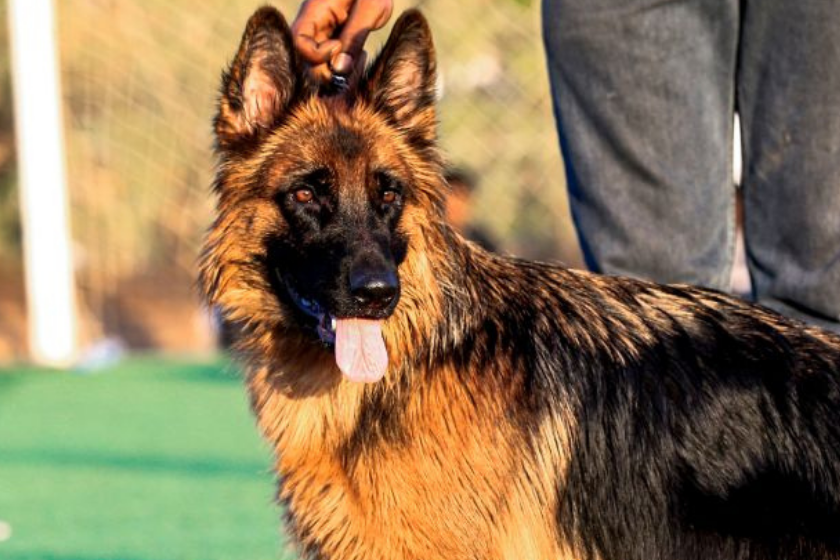
Like their North American relatives, these dogs are bred to have a particular appearance and gait. They are normally a deep rust color mixed with black. After the working lines were established, the show lines were established, and each dog used for breeding must also be working dog material. These dogs are usually slow-paced and thrive in family settings. They have a black saddle instead of a tan saddle, and their backs are straighter, avoiding unnecessary sloping and reducing widely seen health problems. They must pass several tests on their joints and hips to avoid health problems like elbow and hip dysplasia. A reputable breeder will make sure their pups are clear from these issues before having a litter.
5. North American Show Line German Shepherds

Well-bred with a good bloodline, this variant of German Shepherd show line dogs has a laid-back, intellectual personality. Both the American Kennel Club (AKC) and the Canadian Kennel Club (CKC) guidelines state that to maintain the breed standard registered dogs should be short-haired with a "flying gait" created by angulation in their hips and back legs. They are generally black and tan with thick underbellies and chest proportions. Recent breeding practices seem to be attempting to eradicate the protective or safety characteristics of the breed. However, this is one of the traits that make German shepherds excellent working dogs. They are some of the best dogs to be trained as herding dogs, police dogs, search and rescue dogs, and other types of law enforcement dogs.
Bonus: North American Pet Line
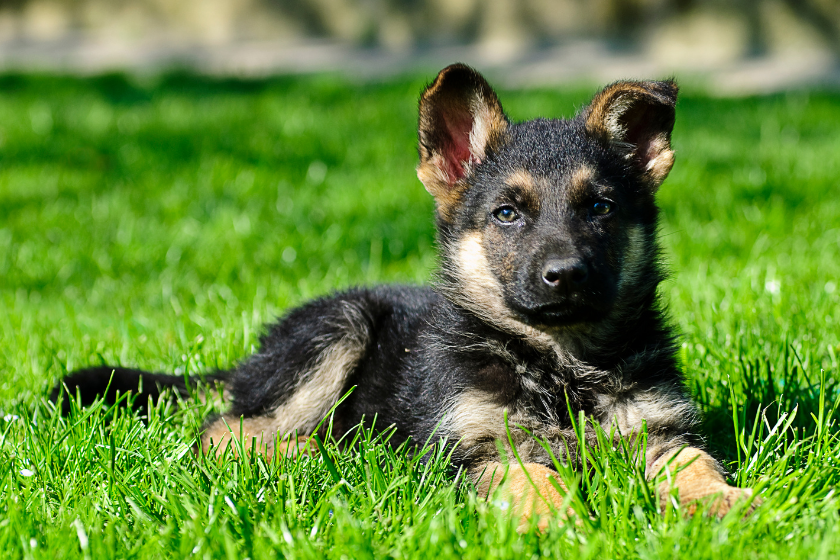
While this type of GSD is not a strictly recognized line, it is the most common German shepherd type that most people will encounter in their lives. These dogs are often not purebred and can be a mix of many different types of German shepherds, as well as other common dog breeds such as Labrador retrievers. The North American pet line may have more health issues due to unregulated breeding. However, the German shepherd remains an excellent pet for many families due to its trainability and protective nature. German shepherd puppies can be slightly high maintenance, with high energy levels, but adapt quickly to regular training and activity. No matter which types of German shepherd dogs are around you, all versions of this breed will do well in a happy, loving home.
Love German Shepherds? Tell us on the Wide Open Pets Facebook page!
